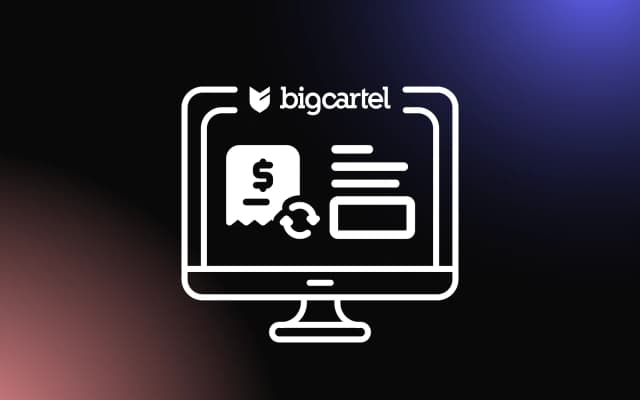
Keeping your website fresh and socially relevant can be difficult when updates live only on Facebook, disconnected from your main site.
Without a way to sync your feed, you miss out on valuable engagement and cross-platform consistency. A Facebook feed widget solves this by letting you display real-time posts, events, and photos directly on your site, encouraging visitors to interact without leaving your page.
In this article, you'll learn how to display Facebook activity feeds using widgets for a more engaging, interactive website experience.
Why Use a Facebook Activity Feed Widget on Your Website?
Adding a Facebook feed widget to your website helps you create a dynamic, engaging environment that keeps visitors connected to your brand’s social presence. A Facebook activity feed widget displays real-time posts, comments, and likes from your Facebook page directly on your site, encouraging more interaction without requiring visitors to leave your webpage.
This live stream of activity not only keeps your content fresh but also builds trust. Seeing consistent updates, user interactions, and community engagement fosters transparency and credibility. It signals to potential customers that your business is active and responsive.
A feed widget is also a powerful content marketing tool. It allows you to repurpose your social media efforts by showcasing promotions, events, testimonials, and product highlights directly on your site. Plus, embedding a Facebook activity feed widget helps boost your social following, as users are more likely to engage with your page when it's seamlessly integrated with your web content.
Encouraging Engagement Through Real-Time Updates
A Facebook activity feed widget allows you to display live updates from your Facebook page directly on your website, creating a real-time bridge between your social presence and web visitors. This constant stream of new content encourages users to linger longer, interact more, and stay informed about your latest posts, promotions, or announcements.
By featuring a Facebook feed widget on key pages—like your homepage, blog sidebar, or contact page—you give visitors a reason to return and engage. Seeing other users’ comments, likes, and shares adds a layer of authenticity and social proof, prompting new visitors to get involved as well.
This type of widget can also help convert passive browsers into followers or customers by creating an always-fresh content hub. Real-time updates show your business is active, responsive, and engaged with its community, helping build a stronger connection between your brand and your audience.
Strengthening Social Proof with Visible Interactions
Integrating a Facebook activity feed widget into your website is an effective way to showcase real customer interactions that validate your brand. When visitors see likes, comments, and shares displayed in real time, it creates a transparent and trustworthy image. This form of social proof reassures new users that your business is active, engaged, and valued by others.
A feed widget helps highlight positive engagement without requiring manual updates. It automatically pulls your latest posts and interactions, showing that others are paying attention and participating. This visibility can influence visitors’ perception and decision-making, especially when they’re considering a product or service.
Whether it’s a post with high engagement or a user-generated comment praising your brand, the widget lets your community speak for you. This ongoing stream of social validation can build credibility quickly, encouraging more visitors to follow your page or convert into loyal customers.
Best Facebook Feed Widgets for Displaying Activity Feeds
Choosing the right Facebook feed widget can significantly enhance your website by showcasing your brand’s latest social content and encouraging real-time interaction. A Facebook activity feed widget should offer a balance of ease-of-use, customizability, and performance, making it simple to display your page’s posts, likes, and comments directly on your site.
One top-rated option is Common Ninja’s Facebook Feed Widget, which allows you to customize the layout, colors, and filters without coding. It’s responsive, supports multiple post formats, and integrates easily with most website builders. For users looking for a sleek and modern design, this widget offers robust functionality and a polished look.
Another popular choice is Smash Balloon Facebook Feed, especially for WordPress users. It offers real-time updates, post filtering, and content moderation, making it ideal for businesses that want full control over their display. It also supports responsive layouts and is optimized for fast load times, key for performance.
When selecting a feed widget, ensure it’s mobile-responsive, SEO-friendly, and offers filtering options for tailored content. A good Facebook activity feed widget doesn’t just show updates—it keeps your website alive with fresh, engaging content that builds trust and boosts interaction.
Top Tools for Customization and Integration
When selecting a Facebook feed widget, it’s important to choose one that offers flexible customization and smooth integration with your website platform. Tools like Common Ninja’s Facebook activity feed widget allow full control over layout, colors, post types, and animation styles, making it easy to match your brand’s visual identity.
For WordPress users, Smash Balloon is a standout choice. It provides advanced filtering, content moderation, and shortcode support, allowing you to embed the widget anywhere on your site with ease. Wix and Squarespace users will appreciate Common Ninja, which offers drag-and-drop functionality and pre-built templates for fast setup.
A high-quality feed widget should also support responsive design and SEO best practices. Look for options that offer iframe-free embedding, live preview editors, and compatibility with other plugins or tools on your site. These features ensure a seamless integration that enhances both site aesthetics and user engagement.
Free vs. Premium Widget Options for Different Needs
When choosing a Facebook feed widget, you’ll find both free and premium options to suit different levels of functionality. Free widgets, like those from Common Ninja, typically offer essential features such as post display, basic styling, and mobile responsiveness. These are ideal for personal blogs or small businesses that need a simple, hands-off solution.
Premium versions of a Facebook activity feed widget unlock advanced capabilities like real-time syncing, content moderation, custom CSS, and multiple feed sources. Tools like Smash Balloon Pro or Common Ninja Premium are perfect for brands that rely heavily on social proof and want more control over design and behavior.
Ultimately, the right feed widget depends on your website’s goals. If you need more customization, scheduling, or analytics, investing in a premium version can deliver greater flexibility and performance, especially for e-commerce sites or content-rich platforms.
How To Embed and Optimize a Facebook Feed Widget
Knowing how to embed Facebook feed content on your website helps you keep content fresh and boost engagement, but proper setup and optimization are key to maximizing its benefits. Start by selecting a widget that matches your platform—WordPress, Wix, Squarespace, or a custom HTML site—and supports responsive design.
To embed the feed widget, most tools provide either a code snippet or a plugin. For custom sites, paste the widget’s HTML/JavaScript code into your page’s body section or designated content block. On platforms like WordPress, install a plugin such as Smash Balloon or Common Ninja, and configure it through the dashboard.
Once installed, optimize the feed widget by adjusting settings like post filtering, display layout, and update frequency. Keep styling consistent with your site’s branding to ensure visual cohesion.
A well-integrated feed widget not only shows social activity but also drives user interaction, improves time on site, and strengthens your brand’s credibility.
Adding the Widget to Popular Website Builders
Embedding a feed widget into platforms like WordPress, Wix, or Squarespace is typically quick and straightforward. Most widgets offer an embed code—just copy it and paste it into an HTML block or widget area on your site.
For WordPress users, plugins like Smash Balloon simplify the process with a drag-and-drop interface and shortcode integration. Wix and Squarespace users can use the “Embed Code” or “Custom Code” feature to place the feed widget anywhere on the page. Just be sure to preview your changes and test responsiveness on both desktop and mobile devices.
Ensuring Mobile Responsiveness and Fast Load Times
To ensure your Facebook feed widget performs well on all devices, choose one that supports responsive design out of the box. Check that the widget auto-adjusts to different screen sizes, and use CSS media queries if manual styling is needed.
Fast load times are equally critical. Avoid heavy scripts or excessive post counts that can slow down performance. Instead, opt for a feed widget that allows content caching, lazy loading, or asynchronous script loading. These features help maintain a smooth user experience while still showcasing real-time social engagement across your website.
Enhance Interaction with a Facebook Feed Widget
Adding a Facebook feed widget to your website bridges the gap between your site and your social presence, keeping content current and visitors engaged.
It’s a simple yet powerful way to promote interaction and extend your reach without extra effort. Start displaying your Facebook activity today and let your site do more with less.


